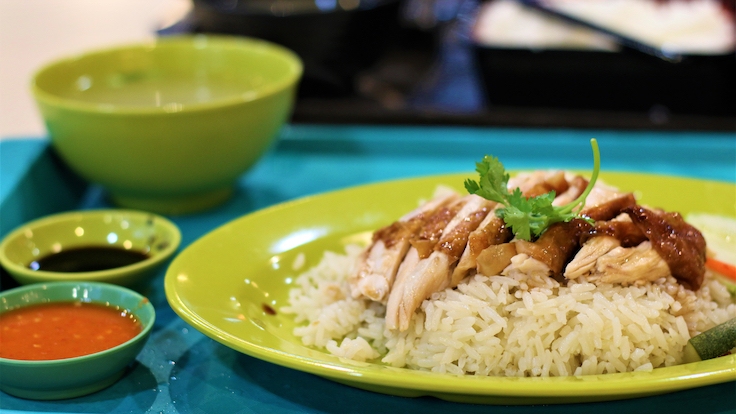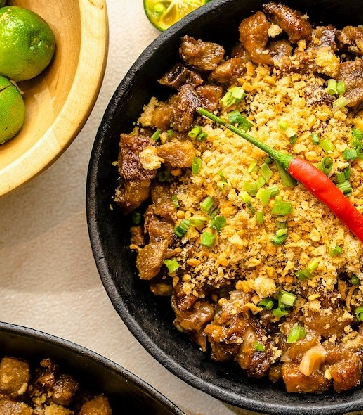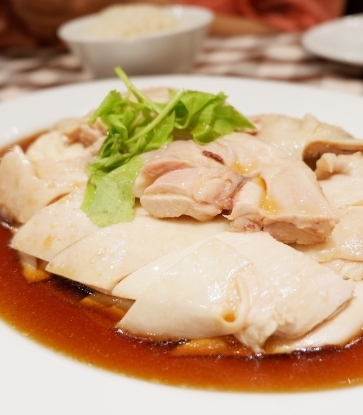Rice is perhaps the widest cultivated and consumed crop in the world — feeding billions, both humans and chickens, every day on every continent on planet Earth. Its grains have been uncovered in archaeological sites dating back ten millennia.
2,000 years later, Southeast Asians became the first peoples to domesticate the chicken. It was a convenient creature to have around: large enough to feed a family, yet small enough to be kept in one’s living quarters; tame enough not to fight back, and conveniently flightless, so one could be caught, killed, de-feathered, and cooked at short notice.
But it’s anybody’s guess, really, on who was the first to serve chicken with rice together in a meal: the ancient protein source vis-à-vis the ancient carb.
The passage of history does determine the future in this case — so, it’s no fluke that modern-day Southeast Asians also happened to be some of the most enthusiastic connoisseurs of chicken rice!
Here are some mouthwatering varieties of chicken rice that one can find in the region:

Singapore: Hainanese Chicken Rice
Singapore’s Hainanese Chicken Rice is one of the most popular lunch options enjoyed by both locals, as well as foreign visitors to the island-state. The dish got its name by being a derivative of the famous Wenchang chicken rice from Hainan, China.
Composed of perfectly poached chicken, served with an aromatic, delicately-flavoured rice, the dish provides a tasty, substantial meal to the locals, besides being accessible to first-time foreign visitors who may be intimidated by the aggressive chilli-heat in many other local food options.
Hainanese sojourners first came to British-ruled Singapore in the mid-19th century to seek greener pastures. By the time they arrived, other Chinese dialect groups had already dominated most of the trades throughout British Malaya and Singapore.
The Hainanese embraced one of last available vocations with uncommon enthusiasm: household management, and became the cooks and retainers for the British colonial establishment. Over time, the industrious, highly-dependable Hainanese made themselves indispensable to their colonial masters in all matters pertaining to this area — from the kitchens of British army bases and naval ships, to the governor’s mansion. Due to their prowess, Malay royalty and aristocracy, as well as the wealthy Straits-Chinese elites, followed suit to employ them as well.
The Hainanese became renowned for the quality and finesse of their cooking — dominating every restaurant and coffee shop throughout the region, with Hainanese Chicken Rice becoming one of their most popular food offerings.
Singapore’s Hainanese poached chicken is usually served bone-in. The chicken will be cooked till it has reached the exact moment of doneness, whence it’s removed from the simmering broth and dunked in cold water to stop the cooking process. The experience of the chef in determining the exact timing for a chicken to be perfectly cooked is the make-or-break. The meat needs to be moist and flavoursome, with no sign of any blood on the bones.
Most establishments will drizzle a light sauce, usually consisting of chicken drippings, sesame oil, light soy sauce and shallot oil, over a platter of chopped chicken right before serving.
Thai fragrant rice is the grain of choice in cooking chicken rice. The raw grains are usually sauteed in chicken fat and garlic, before being steeped in chicken broth and cooked. Ginger, scallions, pandan leaves, and sometimes, lemongrass, are added for additional scent and flavour. Some chefs add a knob of butter or margarine for extra richness.
Dipping sauces are essential for a complete Hainanese chicken rice meal: a good chilli sauce, made from a blend of red chillis, garlic, and vinegar, or calamansi juice, is indispensable. Another important dip is minced ginger, which some diners would mix together with the chili sauce. Many Singaporeans also liked to have thick, caramelly soy sauce, either as a dip, or to drizzle over their rice.
Where to Find Chicken Rice in Singapore: Heng Long BBQ Chicken Rice, Ji De Lai Hainanese Chicken Rice, Soh Kee Cooked Food, Tian Tian Hainanese Chicken Rice, Tiong Bahru Hainanese Boneless Chicken Rice, Boon Tong Kee (Balestier Road), Da Po, Hoe Kee Kitchen, Hup Hong Chicken Rice, People's Park Hainanese Chicken Rice, Xing Yun Hainanese Boneless Chicken Rice, Zi Jing Cheng Hainanese Boneless Chicken Rice
Where to Find Singaporean Chicken Rice in South Korea: One Degree North

Malaysia: Chicken Rice
Malaysia shares the same roots as Singapore for its Hainanese Chicken Rice. During British colonial rule in the 19th- and early 20th-centuries, many Hainanese emigrants arrived in Malaya via the main port of entry, Singapore.
Newly arrived Hainanese emigrants would inevitably stay in Singapore’s burgeoning Hainanese enclave, located near the fabled Raffles Hotel. There, the new arrivals would be schooled in the art of housekeeping by the various Hainanese trade guilds, before being assigned to their new employers throughout Malaya.
The 1965 political separation between Malaysia and Singapore, plus regional food preferences, resulted in local versions of chicken rice which diverged from the Singapore one.
Ethnic Malays prefer their chicken roasted, rather than poached, for their nasi ayam. In Malacca, locals took a liking to chicken rice balls — pulverising their rice and shaping them into ping pong-shaped balls.
In Malaysian cities where the majority of the Chinese populace are Cantonese or Hakka, there is a preference for plain, steamed rice over flavoured rice. Oftentimes, a compromise would ensue, resulting in blander-tasting chicken rice there.
Where to Find Chicken Rice in Malaysia: Nam Heong Chicken Rice, Nasi Ayam Hainan Chee Meng (Jalan Kelang Lama), Goh Thew Chik Hainan Chicken Rice

Thailand: Khao Man Gai
Thailand’s popular Khao Man Gai also has its roots in Hainanese Chicken Rice.
Whilst the cooking techniques for both the chicken and the rice do not differ much from Singapore’s Hainanese chicken rice, the Thai khao man gai dip would consist of fermented soy beans (“taucheo”), vinegar, ginger, sugar, dark soy sauce, and green chillies.
Where to Find Chicken Rice in Thailand: Dan Chicken Rice (San Sai), Watsana Khao Man Gai

Taiwan: Chiayi Chicken Rice
Taiwan has its own version of the chicken rice (雞肉飯), often referred to as Chiayi Chicken Rice, as it originated from Chiayi city in western Taiwan, which reputedly serves the best rendition of this dish.
Chiayi Chicken Rice consists of shredded chicken meat atop plain steamed rice. A sprinkling of golden-fried shallots and chopped scallions are added, together with a drizzle of chicken fat for flavour, plus a light, savoury sauce redolent of scallions, ginger, and chicken stock. Pickled daikon is added as a garnish to undercut the richness of the dish.
Where to Find Chicken Rice in Taiwan: Chi Chia Chuang (Changchun Road), MoonMoonFood (Qingdao East Road), Shan Nay Chicken





















